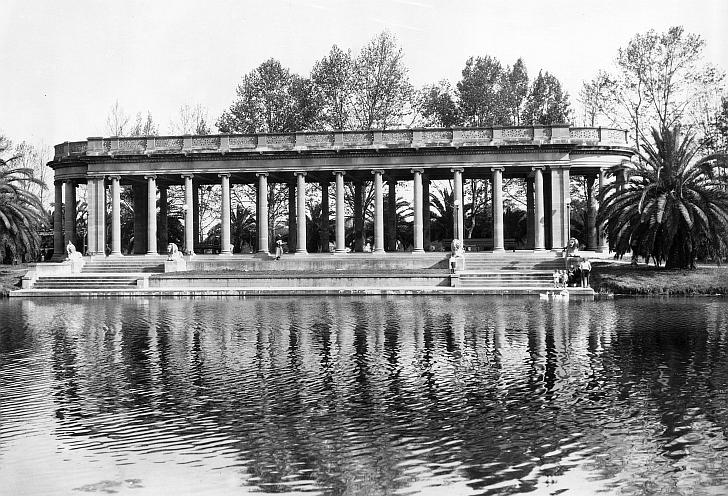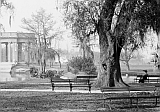|
New Orleans City Park (Images of America) |
|
|
|
~Plantation to Peristyle: 1770-1907~ |
||
|
|

An 1829 mortgage description of Jean Louis Allard's property indicates that it included a two-story master house on
18 arpents fronting Bayou St. John, bounded by Metairie Road (which was renamed City Park Avenue in 1902) for 53 arpents on
the ridge which runs three feet above sea-level. Allard grew corn and sugar cane but used the land primarily as a dairy farm
with 40 cows. Preferring to use his time in intellectual pursuits he had little interest in business and slowly lost portions
of the property until all was sold or auctioned for taxes – which is how John McDonogh acquired the property which he
willed to the city. Allard died in 1847 when his collection of poetry Les Epaves was published. The city sold
much of the Allard/McDonogh property including the bayou frontage but would buy much of it back later. In 1867 a park keeper
was hired to cut the grass on a salary of $80 while illegally selling it for hay, chopping trees to sell wood, and taking
in $15,000 per year charging fees for the grazing of 50 goats, 25 mules, 100 horses, and hundreds of cows. During the 1870's
the keeper, E. A. Pegroux, appointed Jean Marie Saux to oversee the park and tend the cattle. Saux also sold wood from trees
cut in the park – while running his coffeehouse across from it. An 1870 legislative act authorized the city to
levy a real-estate tax to establish "a New Orleans Park" and a Board of Commissioners was appointed. In 1871 prisoners
were used to make some improvements. In 1877 the board was abolished and the City Council took over the park's management.
The land was roughly fenced in 1880 “to keep cows from neighboring pastureland from becoming a further nuisance”. In
1881 new commissioners were appointed – including J.M. Saux (the coffeehouse owner). In 1882 the portion of park west
of Orleans Canal was detached for use as small-pox hospital and cemetery. Picayune's Guide to New Orleans 1903 stated
“The park contains 216.60 acres, only a portion of which, however, has been improved”.
|
|
|
The images in this book appear courtesy of the New Orleans Public Library (NOPL), Louisiana Digital Library (LDL), the Library of Congress (LOC), The Historic New Orleans Collection (HNOC), Pictometry International (PI), and D.C. "Infrogmation" May (DCM). Unless otherwise noted, images are from the author's collection.
|
||
